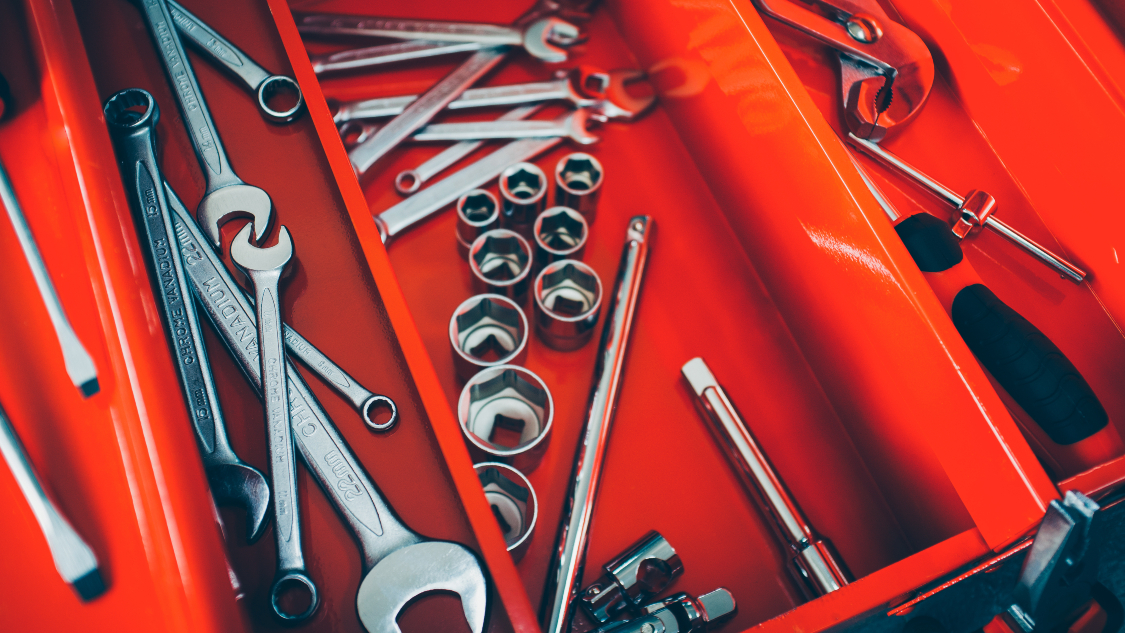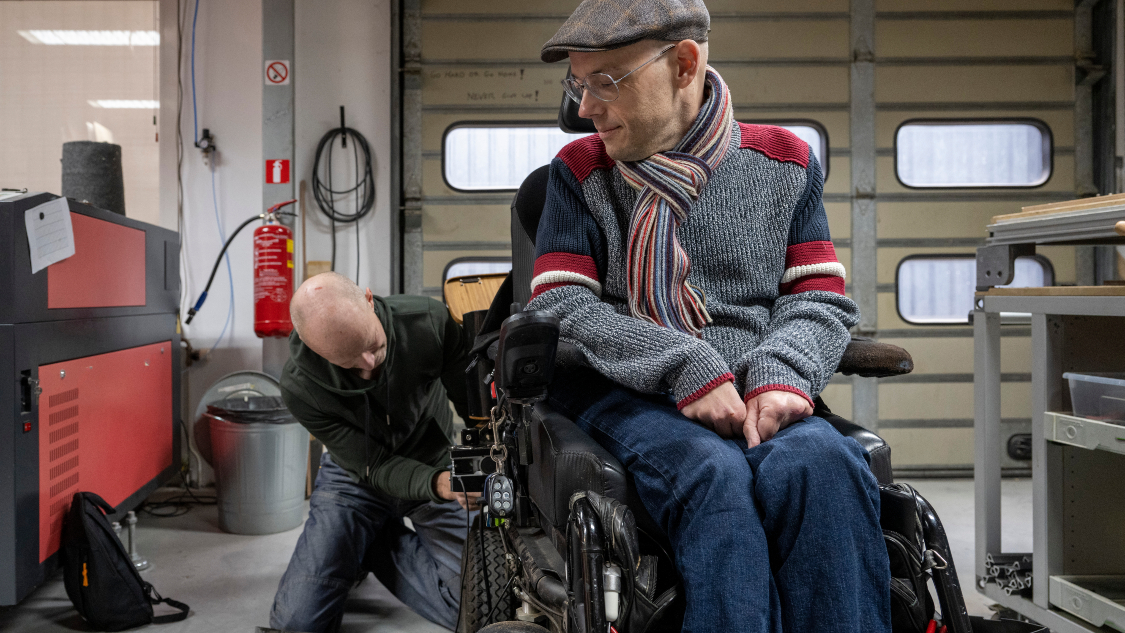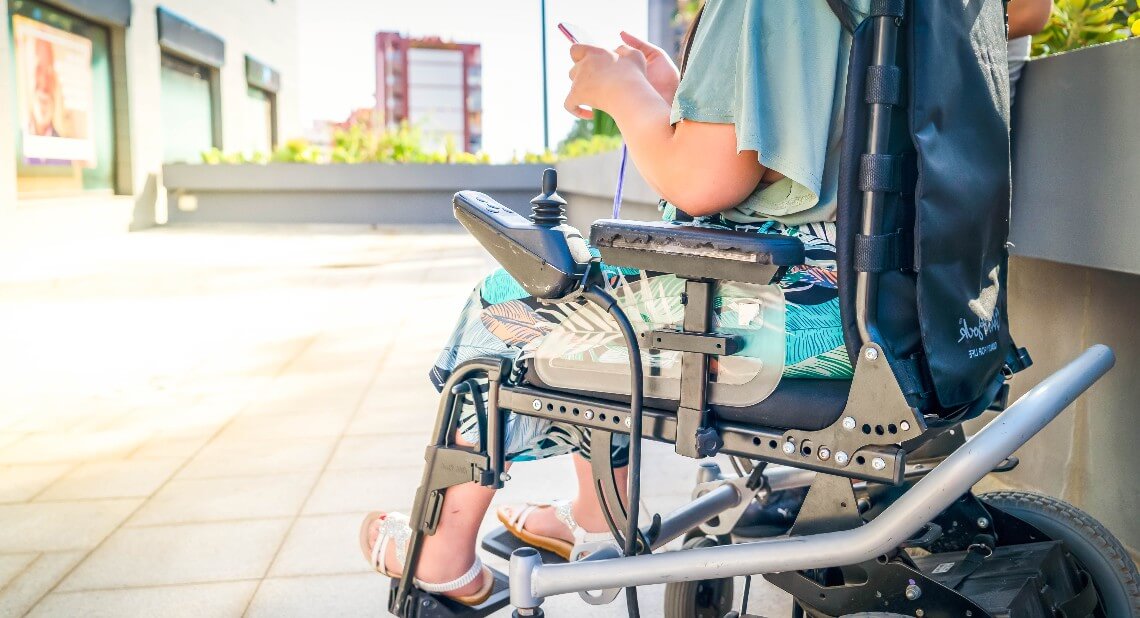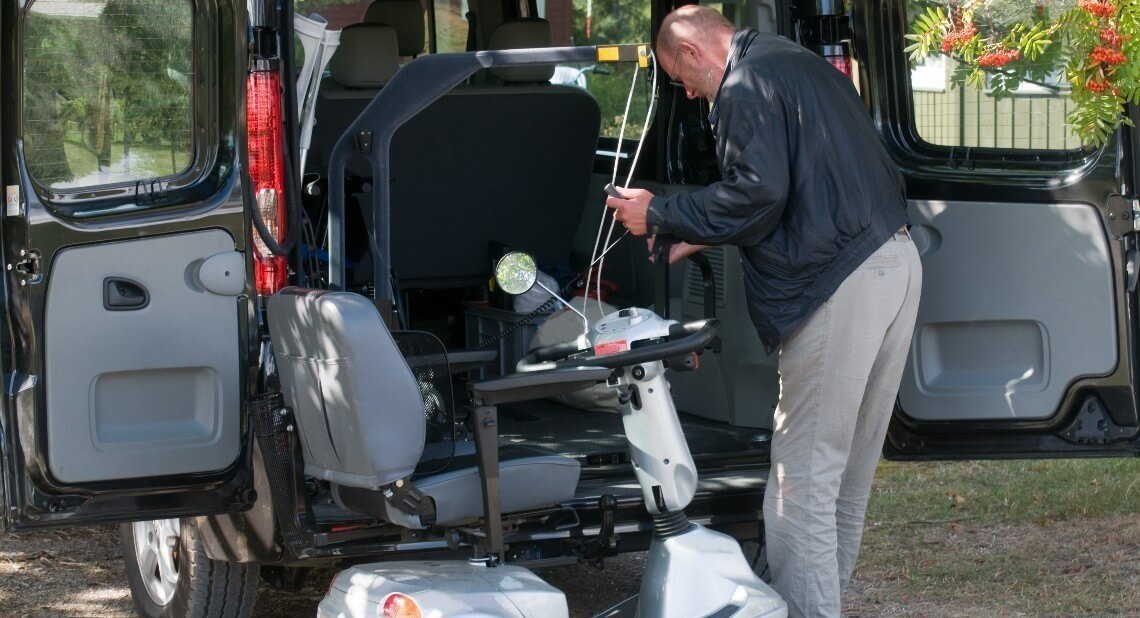Whether you use a powered wheelchair or a mobility scooter, knowing how to care for your equipment is important.
Regular maintenance means your equipment will perform better, be more reliable, and extend the life of your mobility product. Powered wheelchair user, Shona Louise*, has shared her own maintenance guide to help keep your mobility equipment in good condition for longer.
- Why is powered wheelchair and scooter maintenance important?
- Important tools to have at home
- Your regular maintenance checklist
- Shona’s top tips
- Seasonal tips
- Battery care guide
- Yearly maintenance on the Motability Scheme
Why is powered wheelchair and scooter maintenance important?
Once you’ve found the right mobility equipment to give you independence, you’ll want it to work well for a long time. Cleaning and maintaining your equipment should help make sure it stays in good working condition. Everyone will be able to commit different amounts of time to regular maintenance. We’ve broken down some of the things you can do to keep your mobility aid in great condition. You can choose to do as little or as much as you want.
Inspecting your equipment often will also mean you can spot potential problems before they get worse. Screws and bolts can often loosen over time, so it’s vital to keep an eye on these things and spot them early. If you privately own your equipment, you can also save yourself money by spotting small problems before they become expensive problems.
Did you know?
On the Motability Scheme, general wear and tear repairs are covered in your all-inclusive lease package, which includes:
- Insurance
- Servicing and routine repair costs
- Breakdown cover
- Tyre and battery replacements
- Tax for road legal products
Important tools to have at home
It’s handy to be able to solve minor problems yourself, like loose screws, if you’re happy to. Often, things need tightening up or adjusting slightly, and you or a loved one might be able to do this at home. Here are our recommendations for tools to keep at home:
- Screwdrivers
- Adjustable wrench
- Allen keys
- Air pump
- Tyre pressure gauge
Remember that your Motability Scheme lease covers all repairs, no matter how small. So, do not feel that you must carry around tools with you or solve problems yourself if you’re not able or confident in doing so.
Regular maintenance checklist
There are lots of things that can be done on a day-to-day basis to keep your product clean and looking good. There are tasks that can be done less regularly too. Inspecting your mobility product for any small problems means you can get them sorted before they grow into bigger problems which would have a greater impact.
Weekly maintenance tasks
- Washing upholstery items like cushion covers
- Cleaning and disinfecting high-use parts like the joystick, wheels, and armrests
- Inspecting tyres for punctures
Monthly maintenance tasks
- Checking the frame for cracks
- Oiling and greasing moving parts
- Tightening loose parts
- Cleaning the harder-to-reach areas
Shona’s top tips
Powered wheelchair user Shona Louise has shared some of her top tips with us.
“Regularly cleaning and maintaining mobility aids can be challenging for a disabled person,” says Shona. “I’ve learned some tips and tricks to make it easier.
“Fabric sprays designed for cushions and sofas are great for freshening up wheelchair cushions. It’s a quick way to keep everything smelling great, especially if you cannot manage washing the covers at any point.
“Microfibre cloths are also handy for wiping down your mobility equipment. Never be afraid to ask for help with areas that are too difficult to reach, such as low-down parts like the wheels.
“Finally, if you use your powered wheelchair or mobility scooter in your home, remember to regularly check the wheels for hair. You’d be surprised at how quickly it can collect in your wheels!”
Seasonal tips
Different weather can present new challenges when travelling with your powered wheelchair or scooter. As we know, the seasons can be unpredictable, and many circumstances are unavoidable due to the weather. It’s helpful to have some simple things to keep in mind as the seasons change:
Spring
Spring showers can mean we get caught in the rain more often. Powered wheelchairs and mobility scooters contain electrical equipment and should avoid getting too wet. Make sure you thoroughly dry your mobility aid as soon as possible after being in the rain. Upholstery items such as cushion covers should also be thoroughly dried to avoid mould developing.
Summer
If the UK experiences a heatwave, temperatures can rise quickly. Powered mobility aids should not be exposed to extreme temperatures for too long, so keep them in shaded areas. If your equipment overheats, switch it off for a while if you can and let it cool down.
Read our top tips for storing your mobility aid.
Autumn
As the leaves fall in autumn, you might find that your wheels pick them up more. Ensuring your wheels are clear of any debris will keep them moving smoothly. Be sure to check them more often when the pavements are covered with loose leaves and twigs.
Winter
While it can be tempting to take your powered wheelchair or mobility scooter out in the snow, it can cause some issues. If your equipment is not designed for more extreme outdoor use, heavy snow can cause the underneath of your mobility aid to become wet quickly. Like rain, this could cause problems with the electrics of your equipment, so ensure you dry it as much as possible if you use it during wintery weather.
Battery care tips
Taking care of the batteries is one of the most important things to do for your powered wheelchair or mobility scooter. Your batteries will need replacing eventually. This will depend on how often you use your mobility equipment and the environment in which you use it. Your dealer will be able to advise you when your batteries need replacing.
Ensure you follow the manufacturer’s guidance on how often to charge your batteries to keep them in better condition for longer. You should also keep an eye on how your batteries are performing so you can replace them at the right time and avoid running out of charge during the day.
Powered wheelchairs and scooters can give you so much independence, but people often worry about battery problems. If you lease your mobility product through the Motability Scheme, you can contact your dealer at any time to report problems, and they will be quickly dealt with.
Read more about what to expect if your equipment needs repairing.
Yearly maintenance
Some things need to be done yearly to keep your powered wheelchair or mobility scooter running smoothly.
If you lease your equipment through the Motability Scheme, you’ll be offered a yearly service. If you have a powered wheelchair, your service is also an excellent time to check whether it needs any adjustments. If your needs or lifestyle has changed, it’s crucial that your powered wheelchair changes with it.
Getting your yearly service done is important, even if your equipment is in good working order. Sometimes, problems cannot be seen, and you can get ahead of any potential issues. These services will keep your powered wheelchair or mobility scooter in good condition for longer.
Following these tips will help your powered wheelchair or mobility scooter live a long, healthy life.
Interested in joining the Scheme?
Could the Motability Scheme help you stay mobile?
Quickly check if you’re eligible now.
*About the author
Shona Louise is a writer and access consultant. She writes about disability and accessibility and has worked with well-known publishers for over a decade. These include Metro, The Independent, DigitalSpy, Posability Magazine and Rooted in Rights. She is also a theatre photographer and campaigns for greater accessibility in the arts.
Related articles
Scooter and powered wheelchair driving tips
Looking after your Scheme product: tips from a powered wheelchair user
Choosing the right scooter or powered wheelchair for you
![]()











